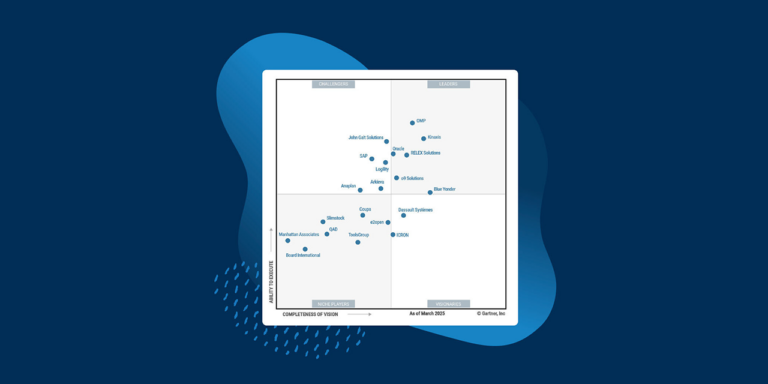The “new normal” requires sharper attention to supply chain analytics
Aug 17, 2020 • 4 min
This piece was originally published in Chain Drug Review.
Over the last few months, retailers of all types have battle-tested their supply chains as they’ve worked to find ways to get critical products into their customers’ hands. In particular, the pharmacy sector has been hard hit, with shopper behavior vacillating between stockpiling and regular buying. This pattern shift has caused headaches for category buyers who would typically have been winding down their busiest sales season during this timeframe. Instead, they have had to pivot quickly and to resolve supply chain issues reactively—a difficult task for those who may have been using inefficient planning tools.
As the first wave of COVID-19 ends and we move into the fall, pharmacy buyers need to prepare for future activity surges as they arise. To support consumers’ changing needs, category management and buying teams should consider incorporating tools that can drive significant business improvements as well as following best practices for inventory management.
IT and merchandising teams need to jointly evaluate the tools available to them and look for best-of-breed providers that deliver robust, accurate demand forecasts; granular demand data; and integrated replenishment and allocation planning. Retail drug companies require these tools not only to address the continuing challenges related to the pandemic but also to proactively update their systems to obtain or maintain an advantage in an increasingly diverse competitive landscape.
Robust, accurate demand forecasts: Retailers that rely on disconnected forecasts for inventory management react more slowly to changes in demand than retailers who have access to one comprehensive forecast that considers all demand factors. For example, individual buyers may use spreadsheets to generate local forecasts based on a simple moving average. These forecasts are difficult (if not impossible) to aggregate, may not incorporate promotions and can lead to store forecasts that differ greatly from distribution center level forecasts. Even when buyers do share one baseline forecast, they may use a separate tool for promotion and markdown forecasts. If those tools do not communicate with each other, it can result in misalignment of pricing strategies.
To resolve these issues, retailers need a single data-based forecasting platform. With a unified solution in place, buyers and central teams have better visibility into the impact of promotions, markdowns, pricing adjustments, product launches, assortment changes and more.
Granular demand data: To ensure the ability to react to the next wave of the coronavirus, retailers need data with a high level of granularity—that is, detailed data at the lowest level possible for a target set. They need data fields that not only cover pack style, size and flavor of each SKU but also data subdivided and parsed into its constituents with details like where in the store it’s placed and what promotions are attached to the product and like items. By layering patterns identified from the initial wave of the pandemic with newly emerging demand trends at the channel/location/item level, retailers can better prepare to increase in-stock levels of the right products as fall approaches.
Integrated replenishment and allocation planning: A holistic view of inventory and demand is required to respond quickly in a dynamic environment. Supply chain integration provides the means for both proactive planning and reactive operations. Both capabilities are critical to move product from locations with excess inventory to locations with inventory needs, as well as for sourcing product efficiently. A supply chain system that can deliver these benefits puts pharmacy retailers in a strong position to improve their ability to weather the storm — especially when combined with best-practice planning processes.
Automate replenishment for steady-state categories: To free up their category management team’s time and focus, retailers should leverage their planning solution to automate processes like forecasting, allocation and replenishment for non-surging categories. Preparing automated processes now allows teams to focus on the key categories that will be most heavily impacted by the next demand surge.
Manage by exception: Once steady-state categories are largely automated and retailers have a granular view of their data, they can take their process one step further by reviewing the exceptions their buyers are focused on. Buyers should consider important exceptions such as high-value SKUs with low in-stock percentages during the first wave, SKUs trending higher than their forecasts as we head into the fall and products within the DC that are overstocked. These exceptions can help buyers make strategic decisions to maintain in-stock levels, send inventory where it is needed and increase their product sales.
Establish an effective process for scarcity allocations: When demand for surging items exceeds distribution center supply, supply chain teams need to be prepared to manage item hoarding purchasing behavior at the store level. Data-driven allocations based on store-level sales can ensure that inventory goes where it is most needed. While optimized scarcity allocation doesn’t resolve the root problem of hoarding, it does enable the supply chain team to best distribute the available goods.
Identify categories impacted by demand surges: The key areas of focus for buyers and category managers will be to recognize trends from the first wave of the pandemic that may be repeated in the fall or winter. For these items, buyers must identify substitute items and secure alternative supplier sources. As a best practice, the category team should ensure that all relevant information from the current COVID-19 wave is captured and well documented in their supply chain systems. This will help drive better decision-making in the future.
In addition, as is evident from the first wave, different areas of the country are impacted by the pandemic at different times and with different effects. Sharing learnings across the geographies of the retailer on what tactics are most effective in one scenario, and more importantly, what doesn’t work, helps increase the probability of success for promotions, assortment changes, pricing adjustments and markdowns.
Retail category teams and supply chain planners must come together to meet the needs of their consumers as everyone moves toward a “new normal.” Ensuring that people have access to the medicine, vitamins and other essential products that they need is incredibly important, especially with the challenges of product shortages seen in the first wave of the pandemic. Above all, pharmacy retailers can best support their customers’ needs if they implement a combination of the right tools and the right processes to optimize inventory in their key categories.



